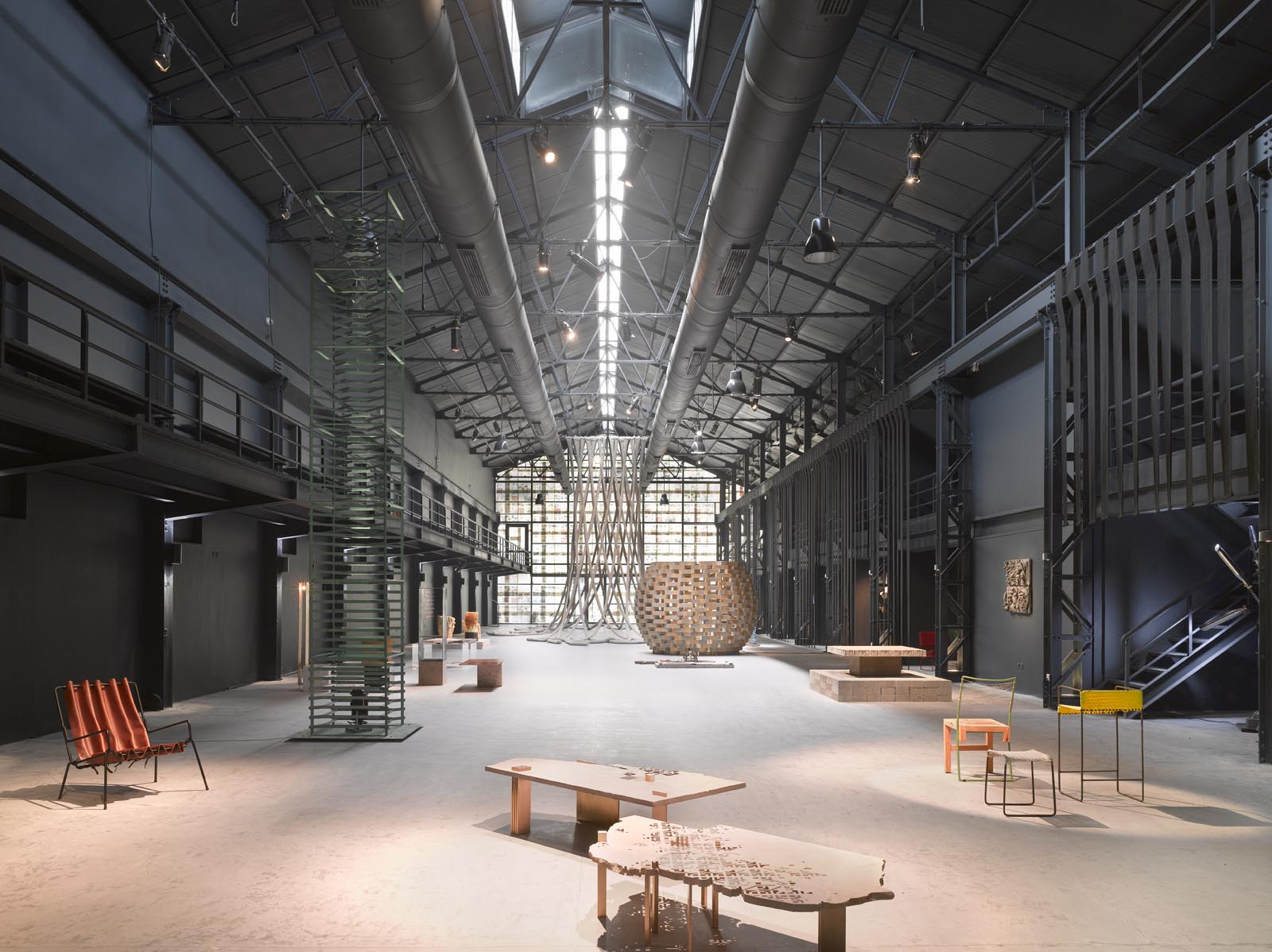

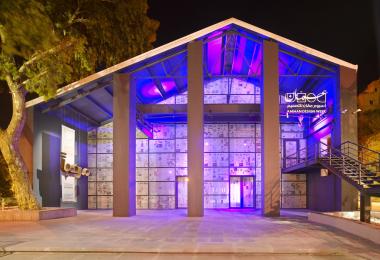
The Hangar Exhibition
The Hangar Exhibition 2016 was curated by Sahel Al Hiyari
Photo by Roland Halbe
© Amman Design Week 2016
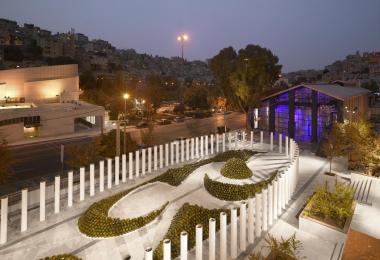
Rujm al Batteekh
Karpouz Collaborative
This temporary installation in the front courtyard of the Hangar is composed of seven rujm-like hills of watermelons.
Every summer, Amman is filled with pyramids of watermelons. Every grocer becomes a pharaoh, and every grocery shop becomes a Giza. No fruit lends itself to such an architectural use like watermelons. The pyramids have become so common in our everyday landscape that we forget how ingenious a solution they provide for the storage and display of melons. Much of the engineering of watermelons is about improving their structural qualities and their ability to stack and to withhold pressure. They continue to improve but the structural solution for their display has long ago settled on the pyramid and it has not changed much over time.
The proposed landscape celebrates the nutritional, engineering, and aesthetic attributes of watermelons by expanding the possible forms of stacking.
Much of what designers do is take already developed solutions, improve on them, and elevate
them into an aesthetic expression of their function.
Photo by Roland Halbe
© Amman Design Week 2016
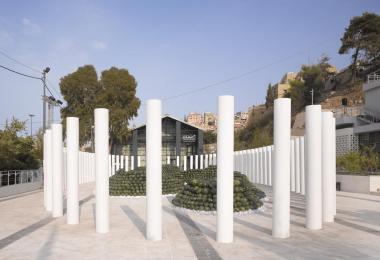
A Memorial for a Lost Courtyard I Have Never Been to
Sahel Al Hiyari
This installation stands in a space that was once enclosed by a fabric of humble yet stern buildings. The edges of the space were defined and buffered from the street and the site's natural surroundings. Although the courtyard was clearly demarcated by structures, one would have still been able to see the surrounding mountains with their clusters of houses, walled-in gardens, narrow passages and stairs typical to Amman. This quality of being part of both public and private, of also being intimately separated yet connected to the city, has disappeared once the fabric delineating the space was demolished.
In an attempt to summon or recapture the qualities of this lost courtyard in simple terms, the installation forms an elliptical memorial defined by a series of columns with varying densities. Through memory, the space constructs a chronicle of disappearance and points to the impossibility of capturing that which was once lost. It can be seen as a void or as a chamber that holds new possibilities.
Photo by Roland Halbe
© Amman Design Week 2016
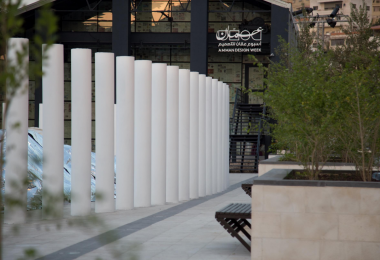
A Memorial for a Lost Courtyard I Have Never Been to
Sahel Al Hiyari
This installation stands in a space that was once enclosed by a fabric of humble yet stern buildings. The edges of the space were defined and buffered from the street and the site's natural surroundings. Although the courtyard was clearly demarcated by structures, one would have still been able to see the surrounding mountains with their clusters of houses, walled-in gardens, narrow passages and stairs typical to Amman. This quality of being part of both public and private, of also being intimately separated yet connected to the city, has disappeared once the fabric delineating the space was demolished.
In an attempt to summon or recapture the qualities of this lost courtyard in simple terms, the installation forms an elliptical memorial defined by a series of columns with varying densities. Through memory, the space constructs a chronicle of disappearance and points to the impossibility of capturing that which was once lost. It can be seen as a void or as a chamber that holds new possibilities.
© Amman Design Week 2016
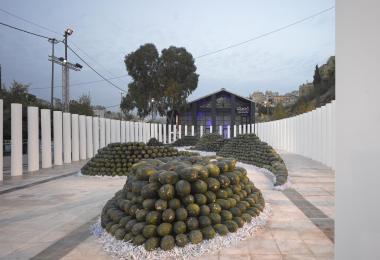
Rujm al Batteekh
Karpouz Collaborative
This temporary installation in the front courtyard of the Hangar is composed of seven rujm-like hills of watermelons.
Every summer, Amman is filled with pyramids of watermelons. Every grocer becomes a pharaoh, and every grocery shop becomes a Giza. No fruit lends itself to such an architectural use like watermelons. The pyramids have become so common in our everyday landscape that we forget how ingenious a solution they provide for the storage and display of melons. Much of the engineering of watermelons is about improving their structural qualities and their ability to stack and to withhold pressure. They continue to improve but the structural solution for their display has long ago settled on the pyramid and it has not changed much over time.
The proposed landscape celebrates the nutritional, engineering, and aesthetic attributes of watermelons by expanding the possible forms of stacking.
Much of what designers do is take already developed solutions, improve on them, and elevate
them into an aesthetic expression of their function.
Photo by Roland Halbe
© Amman Design Week 2016

Symphony of Emptiness-861
Dina Haddadin
Photo by Roland Halbe
© Amman Design Week 2016
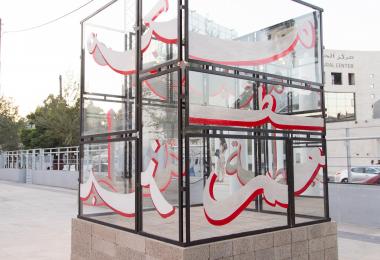
Wajha's Cube
Wajha
Wajha is an initiative that proposes traditional signage solutions that revive the hand-made calligraphy, fonts, and images that used to adorn the shops of old Amman.
© Amman Design Week 2016
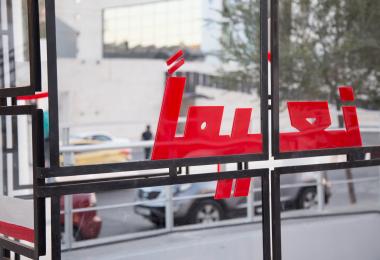
Wajha's Cube
Wajha
Wajha is an initiative that proposes traditional signage solutions that revive the hand-made calligraphy, fonts, and images that used to adorn the shops of old Amman.
© Amman Design Week 2016
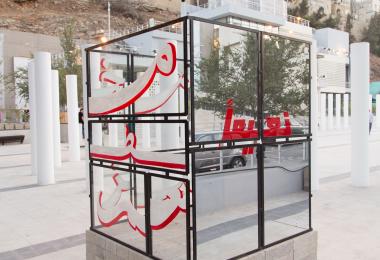
Wajha's Cube
Wajha
Wajha is an initiative that proposes traditional signage solutions that revive the hand-made calligraphy, fonts, and images that used to adorn the shops of old Amman.
© Amman Design Week 2016
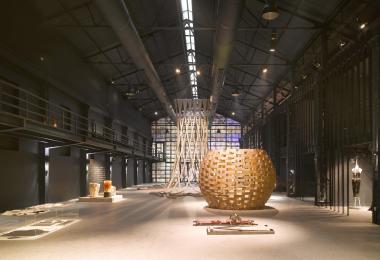
The Hangar Exhibition
Curated by Sahel Al Hiyari
The Interior of the Hangar Exhibition, taking place at the old Electricity Hangar in downtown Amman, and curated by Sahel Al Hiyari
Photo by Roland Halbe
© Amman Design Week 2016
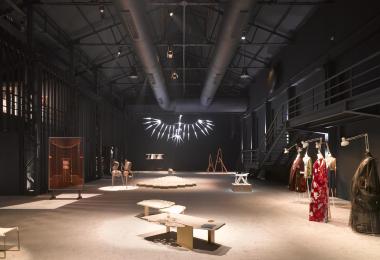
The Hangar Exhibition
Curated by Sahel Al Hiyari
The Interior of the Hangar Exhibition, taking place at the old Electricity Hangar in downtown Amman, and curated by Sahel Al Hiyari
Photo by Roland Halbe
© Amman Design Week 2016

The Hangar Exhibition
Curated by Sahel Al Hiyari
The Interior of the Hangar Exhibition, taking place at the old Electricity Hangar in downtown Amman, and curated by Sahel Al Hiyari
Photo by Roland Halbe
© Amman Design Week 2016
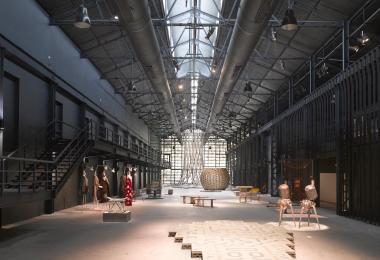
The Hangar Exhibition
Curated by Sahel Al Hiyari
The Interior of the Hangar Exhibition, taking place at the old Electricity Hangar in downtown Amman, and curated by Sahel Al Hiyari
Photo by Roland Halbe
© Amman Design Week 2016
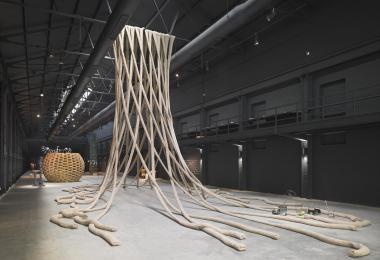
Entrelac
Raya Kassisieh & Nader Tehrani (NADAAA)
Putting in dialogue between digital design with traditional craft, the installation utilizes simulated physics to relax knit fabric. It was produced with a tacit knowledge of material behavior, resulting from a collaboration between an architect and textile designer.
Working with local women communities, the 350 kg of undyed wool yarn is hand knit into a monumental form. The material bias of a simple jersey knit surface, configured in long thin sheets, produces a more volumetric strand as the sheet naturally rolls in upon itself. These strands are hung and again woven as a single cross stitch, at a larger scale, to form an enclosure, an architecturally scaled garment, which descends from the order and geometric exactitude privileged in the digital realm, to entropy and material reality at the ground.
Photo by Roland Halbe
© Amman Design Week 2016
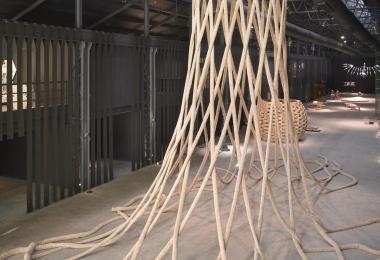
Entrelac
Raya Kassisieh & Nader Tehrani (NADAAA)
Putting in dialogue between digital design with traditional craft, the installation utilizes simulated physics to relax knit fabric. It was produced with a tacit knowledge of material behavior, resulting from a collaboration between an architect and textile designer.
Working with local women communities, the 350 kg of undyed wool yarn is hand knit into a monumental form. The material bias of a simple jersey knit surface, configured in long thin sheets, produces a more volumetric strand as the sheet naturally rolls in upon itself. These strands are hung and again woven as a single cross stitch, at a larger scale, to form an enclosure, an architecturally scaled garment, which descends from the order and geometric exactitude privileged in the digital realm, to entropy and material reality at the ground.
Photo by Roland Halbe
© Amman Design Week 2016
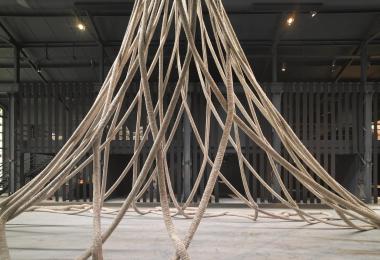
Entrelac
Raya Kassisieh & Nader Tehrani (NADAAA)
Putting in dialogue between digital design with traditional craft, the installation utilizes simulated physics to relax knit fabric. It was produced with a tacit knowledge of material behavior, resulting from a collaboration between an architect and textile designer.
Working with local women communities, the 350 kg of undyed wool yarn is hand knit into a monumental form. The material bias of a simple jersey knit surface, configured in long thin sheets, produces a more volumetric strand as the sheet naturally rolls in upon itself. These strands are hung and again woven as a single cross stitch, at a larger scale, to form an enclosure, an architecturally scaled garment, which descends from the order and geometric exactitude privileged in the digital realm, to entropy and material reality at the ground.
Photo by Roland Halbe
© Amman Design Week 2016

Wire Cars
Zikra Initiative
Wire cars are toys that highlight the creativity and resourcefulness of the children and how they articulate environmental attentiveness through conservation, reusing and recycling.
© Amman Design Week 2016
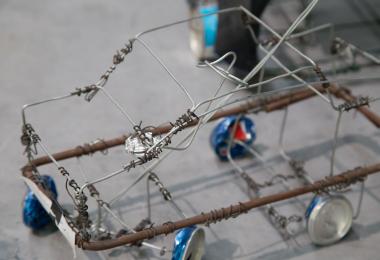
Wire Cars
Zikra Initiative
Wire cars are toys that highlight the creativity and resourcefulness of the children and how they articulate environmental attentiveness through conservation, reusing and recycling.
© Amman Design Week 2016
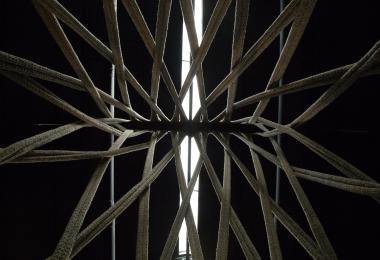
Entrelac
Raya Kassisieh & Nader Tehrani (NADAAA)
Bottom view:
Putting in dialogue between digital design with traditional craft, the installation utilizes simulated physics to relax knit fabric. It was produced with a tacit knowledge of material behavior, resulting from a collaboration between an architect and textile designer.
Working with local women communities, the 350 kg of undyed wool yarn is hand knit into a monumental form. The material bias of a simple jersey knit surface, configured in long thin sheets, produces a more volumetric strand as the sheet naturally rolls in upon itself. These strands are hung and again woven as a single cross stitch, at a larger scale, to form an enclosure, an architecturally scaled garment, which descends from the order and geometric exactitude privileged in the digital realm, to entropy and material reality at the ground.
© Amman Design Week 2016
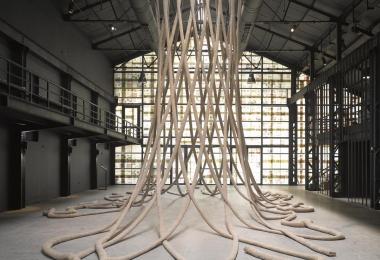
Entrelac
Raya Kassisieh & Nader Tehrani (NADAAA)
Putting in dialogue between digital design with traditional craft, the installation utilizes simulated physics to relax knit fabric. It was produced with a tacit knowledge of material behavior, resulting from a collaboration between an architect and textile designer.
Working with local women communities, the 350 kg of undyed wool yarn is hand knit into a monumental form. The material bias of a simple jersey knit surface, configured in long thin sheets, produces a more volumetric strand as the sheet naturally rolls in upon itself. These strands are hung and again woven as a single cross stitch, at a larger scale, to form an enclosure, an architecturally scaled garment, which descends from the order and geometric exactitude privileged in the digital realm, to entropy and material reality at the ground.
Photo by Roland Halbe
© Amman Design Week 2016
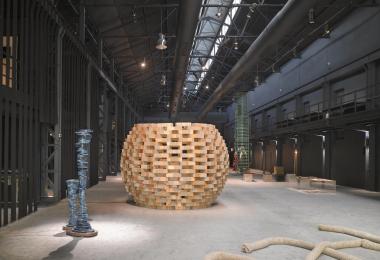
Cinder Block Disco Ball
Aziza Chaouni Projects - Aziza Chaouni, Veronica Gallego, Yi Zhang
The Cinder Block Disco Ball is built using regular cinder blocks imprinted with gold leaf, transforming the ordinary into the extraordinary.
Photo by Roland Halbe
© Amman Design Week 2016

Cinder Block Disco Ball
Aziza Chaouni Projects - Aziza Chaouni, Veronica Gallego, Yi Zhang
The Cinder Block Disco Ball is built using regular cinder blocks imprinted with gold leaf, transforming the ordinary into the extraordinary.
© Amman Design Week 2016
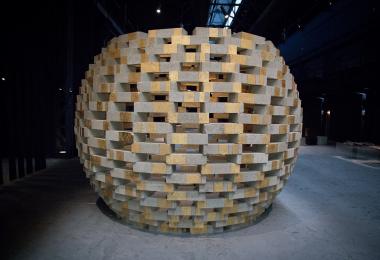
Cinder Block Disco Ball
Aziza Chaouni Projects - Aziza Chaouni, Veronica Gallego, Yi Zhang
The Cinder Block Disco Ball is built using regular cinder blocks imprinted with gold leaf, transforming the ordinary into the extraordinary.
© Amman Design Week 2016
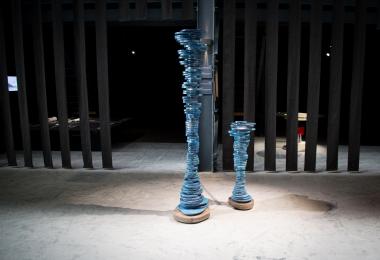
Indigo
Katia Al Tal: Nuwa Creations
Indigo is a ceramic lamp brought to life through movement, light and color. It is an assemblage of rotating ceramic layers finely cut to form an organic, vibrant shape. Its internal skeleton and base facilitate the rotation of each layer to form multitudes of shapes.
© Amman Design Week 2016
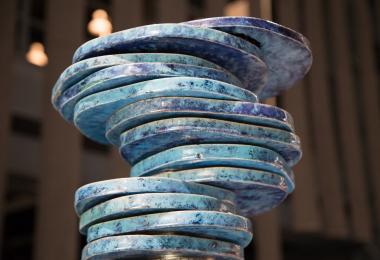
Indigo
Katia Al Tal: Nuwa Creations
Indigo is a ceramic lamp brought to life through movement, light and color. It is an assemblage of rotating ceramic layers finely cut to form an organic, vibrant shape. Its internal skeleton and base facilitate the rotation of each layer to form multitudes of shapes.
© Amman Design Week 2016
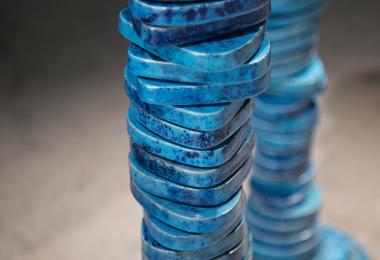
Indigo
Katia Al Tal: Nuwa Creations
Indigo is a ceramic lamp brought to life through movement, light and color. It is an assemblage of rotating ceramic layers finely cut to form an organic, vibrant shape. Its internal skeleton and base facilitate the rotation of each layer to form multitudes of shapes.
© Amman Design Week 2016
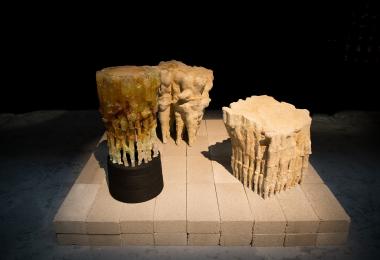
(left to right) Toast, Sit.1, Sit. 2
Architecture + Other Things and Yasmeen Hamouda
Toast is a chair that integrates two usually contradictory conditions; transparency and texture. Toast explores the potential of utilizing computational design methodologies and digital fabrication techniques to question and transform everyday objects.
This series of Almost Natural Things represents an ongoing attempt at exploring the role of the Anthropocene in the production and aesthetics of the everyday. The motivation behind these chairs is to uncover a nebulous relationship between natural and synthetic things. The deployment of computational design methodologies and nonlinear fabrication has allowed for the questioning of this relationship through the amplification of textural formations in place of traditional part-to-whole relationships.
© Amman Design Week 2016

Toast
Architecture + Other Things and Yasmeen Hamouda
Toast is a chair that integrates two usually contradictory conditions; transparency and texture. Toast explores the potential of utilizing computational design methodologies and digital fabrication techniques to question and transform everyday objects.
© Amman Design Week 2016

Sit.1
Architecture + Other Things
This series of Almost Natural Things represents an ongoing attempt at exploring the role of the Anthropocene in the production and aesthetics of the everyday. The motivation behind these chairs is to uncover a nebulous relationship between natural and synthetic things. The deployment of computational design methodologies and nonlinear fabrication has allowed for the questioning of this relationship through the amplification of textural formations in place of traditional part-to-whole relationships.
© Amman Design Week 2016

Felt and Leather; a Symbiosis
Ishraq Zraikat
A hand-smocked piece of cow leather is combined with hand-dyed and hand-felted sheep wool to create a three-dimensional texture and visual effect. This work explores the possibilities of combining wool felt and leather, two animal materials that are not often mixed together.
© Amman Design Week 2016
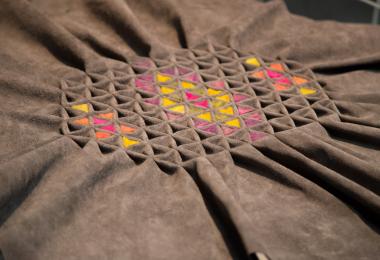
Felt and Leather; a Symbiosis
Ishraq Zraikat
A hand-smocked piece of cow leather is combined with hand-dyed and hand-felted sheep wool to create a three-dimensional texture and visual effect. This work explores the possibilities of combining wool felt and leather, two animal materials that are not often mixed together.
© Amman Design Week 2016
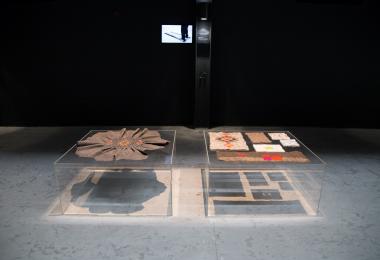
Felt and Leather; a Symbiosis
Ishraq Zraikat
This work explores the possibilities of combining wool felt and leather, two animal materials that are not often mixed together.
© Amman Design Week 2016
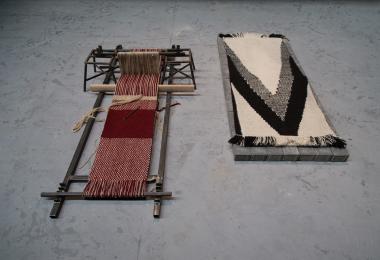
Prayer Rug 1
Ishraq Zraikat
Prayer Rug 1 uses the 'Double Weave' technique to create a three-layered prayer rug that offers various visual patterns depending on which layers are exposed. The rug is woven using the traditional techniques and tools of native Jordanian rug weaving, slightly adapted to create a three-dimensional textile.
© Amman Design Week 2016
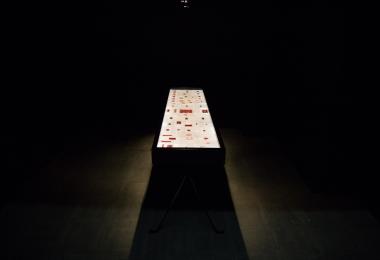
Face from Another World
Ziad Qweider
Inspired by traditional Palestinian embroidery, these intricate works reflect their own cultural specificity as well as multiple traditions and histories. The designs are both extremely simple and complex using the designers personal narrative to create its form.
© Amman Design Week 2016
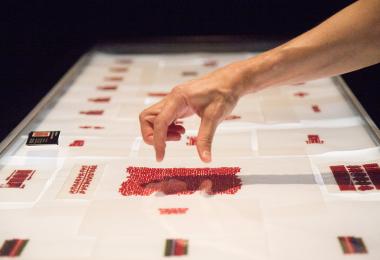
Face from Another World
Ziad Qweider
Inspired by traditional Palestinian embroidery, these intricate works reflect their own cultural specificity as well as multiple traditions and histories. The designs are both extremely simple and complex using the designers personal narrative to create its form.
© Amman Design Week 2016
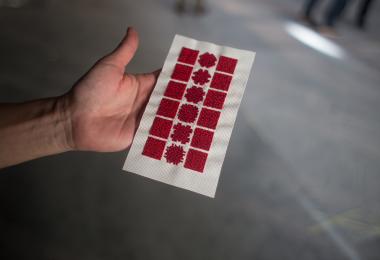
Face from Another World
Ziad Qweider
Inspired by traditional Palestinian embroidery, these intricate works reflect their own cultural specificity as well as multiple traditions and histories. The designs are both extremely simple and complex using the designers personal narrative to create its form.
© Amman Design Week 2016

Face from Another World
Ziad Qweider
Inspired by traditional Palestinian embroidery, these intricate works reflect their own cultural specificity as well as multiple traditions and histories. The designs are both extremely simple and complex using the designers personal narrative to create its form.
© Amman Design Week 2016
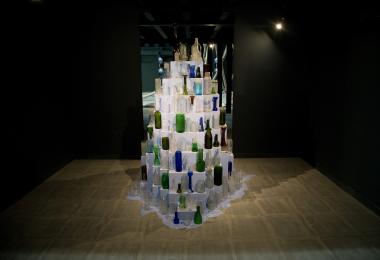
The Glass Shaper
Ahmad Jallouk, installation by Sahel Al Hiyari
This installation presents the work of glass shaper Ahmad Jallouk. In the installation, Jallouk takes discarded glass objects—ranging from bottles to light bulbs—and delicately alters and edits them to give them new life, form, and function. The installation demonstrates Jallouk’s ability to transform mundane and discarded objects into items of environmental value. With great skill and care, Jallouk edits the forms using a simple handmade technique, reshaping delicate objects into a whole that is larger than the sum of its parts.
This installation was conceived by Sahel Al Hiyari.
© Amman Design Week 2016
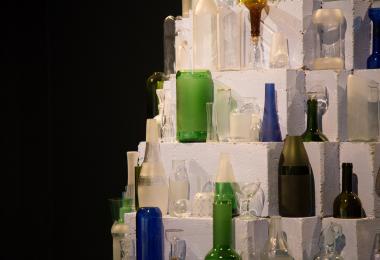
The Glass Shaper
Ahmad Jallouk, installation by Sahel Al Hiyari
This installation presents the work of glass shaper Ahmad Jallouk. In the installation, Jallouk takes discarded glass objects—ranging from bottles to light bulbs—and delicately alters and edits them to give them new life, form, and function. The installation demonstrates Jallouk’s ability to transform mundane and discarded objects into items of environmental value. With great skill and care, Jallouk edits the forms using a simple handmade technique, reshaping delicate objects into a whole that is larger than the sum of its parts.
This installation was conceived by Sahel Al Hiyari.
© Amman Design Week 2016
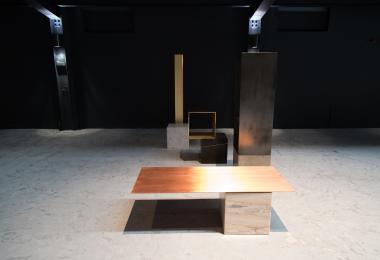
Sophisticated Simplicity: 40's Collection
Morph X Design Studio: Suliman Innab
Furniture collection
© Amman Design Week 2016
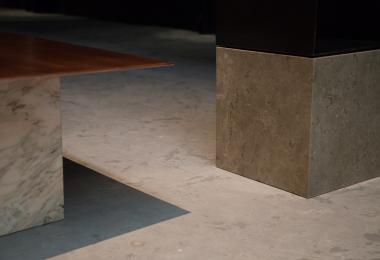
Sophisticated Simplicity: 40's Collection
Morph X Design Studio: Suliman Innab
Furniture collection
© Amman Design Week 2016

Minaret Installation
Yazeed Obeid and Jeries El Ali
This installation appropriates the typical steel minarets found in the countryside of Jordan, conceived by blacksmiths out of necessity and lack of resources. The installation proposes a minaret that appears and disappears according to the position of the viewer.
© Amman Design Week 2016
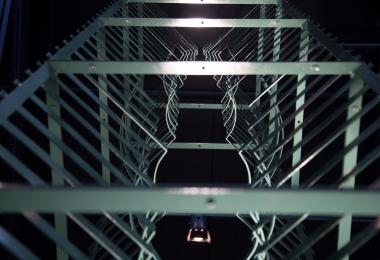
Minaret Installation
Yazeed Obeid and Jeries El Ali
This installation appropriates the typical steel minarets found in the countryside of Jordan, conceived by blacksmiths out of necessity and lack of resources. The installation proposes a minaret that appears and disappears according to the position of the viewer.
© Amman Design Week 2016
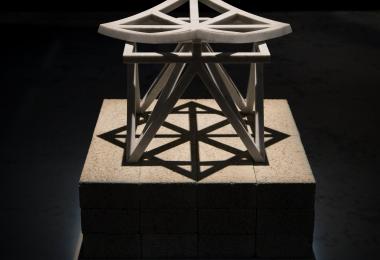
Unfolding Unity Stool: Marble Edition
Aljoud Lootah Design Studio
The Unfolding Unity Stool is part of the 'Double Square' collection.
‘Double Square’ is a collection of geometric furniture which takes inspiration from Arabesque patterns and motifs. When viewed from the top, the Double Square collection depicts a recurring Arabesque 8-pointed star motif. The motif consists of two squares, one rotated 45 degrees relative to the other. It is the starting point of a variety of Arabesque patterns, and a large number of different combinations can be generated through it.
© Amman Design Week 2016
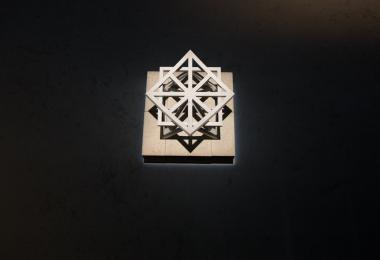
Unfolding Unity Stool: Marble Edition
Aljoud Lootah Design Studio
The Unfolding Unity Stool is part of the 'Double Square' collection.
‘Double Square’ is a collection of geometric furniture which takes inspiration from Arabesque patterns and motifs. When viewed from the top, the Double Square collection depicts a recurring Arabesque 8-pointed star motif. The motif consists of two squares, one rotated 45 degrees relative to the other. It is the starting point of a variety of Arabesque patterns, and a large number of different combinations can be generated through it.
© Amman Design Week 2016
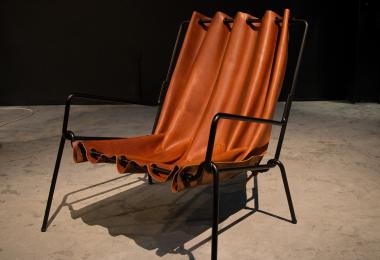
Drape
1 millimetre
Using the undulating forms of a curtain as it hangs from a pole, this chair uses a mix of precision geometry and origami patterns to create a complex shape from a single piece of Tuscan vegetable tanned leather. A combination of brass sail eyelets and leather ties keep the leather in place. The tubular steel frame is hand bent and finished in Italy and can be disassembled to interchange the leather ‘jackets’.
© Amman Design Week 2016
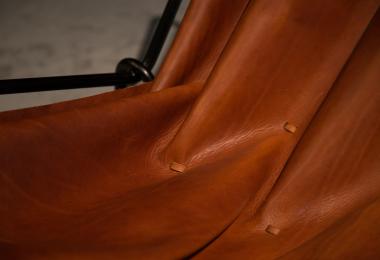
Drape
1 millimetre
Using the undulating forms of a curtain as it hangs from a pole, this chair uses a mix of precision geometry and origami patterns to create a complex shape from a single piece of Tuscan vegetable tanned leather. A combination of brass sail eyelets and leather ties keep the leather in place. The tubular steel frame is hand bent and finished in Italy and can be disassembled to interchange the leather ‘jackets’.
© Amman Design Week 2016
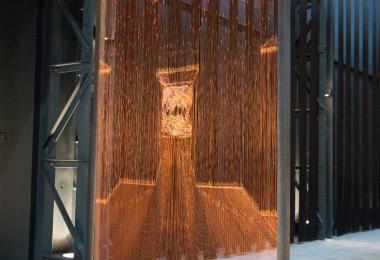
Impression
Hiba Shahzada
What the mind conceives, whether of an object or a space, is never reduced to a single drawing, a single sketch or model. It is rather that this product, informed by the medium or media used to create it, becomes an impression of an idea with limitless possibilities of interpretation, and transformation.
The essence of copper is used to extract a palette of color and command a technique for portraying an architectural idea. Wires are woven together to render the depth, light and shade, texture and materials of a three-dimensional space.
The product is a two-dimensional screen that expresses qualities transcending its surface.
© Amman Design Week 2016

Impression
Hiba Shahzada
What the mind conceives, whether of an object or a space, is never reduced to a single drawing, a single sketch or model. It is rather that this product, informed by the medium or media used to create it, becomes an impression of an idea with limitless possibilities of interpretation, and transformation.
The essence of copper is used to extract a palette of color and command a technique for portraying an architectural idea. Wires are woven together to render the depth, light and shade, texture and materials of a three-dimensional space.
The product is a two-dimensional screen that expresses qualities transcending its surface.
© Amman Design Week 2016
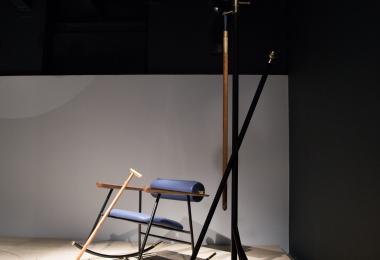
The Loulou/Hoda Series
david/nicolas
This collection is a visual reconstruction of Lebanese grandmothers furniture. The items take one back to the home of one’s grandmother—a strange yet almost sacred place, filled with an assortment of old Western and Oriental furniture. Having made a certain impact on them during their childhood, these items have been reconstructed to fit a contemporary lifestyle.
This series is courtesy of Joy Mardini Design Gallery.
© Amman Design Week 2016
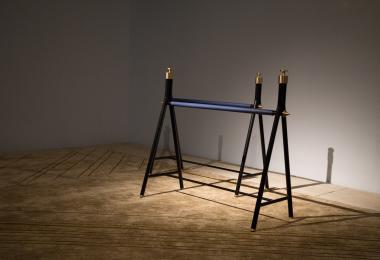
The Loulou/Hoda Series
david/nicolas
This collection is a visual reconstruction of Lebanese grandmothers furniture. The items take one back to the home of one’s grandmother—a strange yet almost sacred place, filled with an assortment of old Western and Oriental furniture. Having made a certain impact on them during their childhood, these items have been reconstructed to fit a contemporary lifestyle.
This series is courtesy of Joy Mardini Design Gallery.
© Amman Design Week 2016
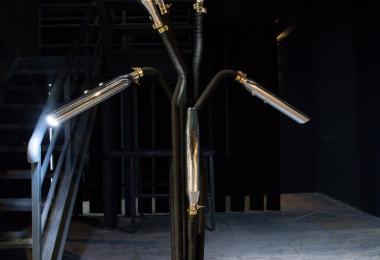
The HD Tree Light (Harley Davidson)
Auto-Art: Abdulrahman Asfour
A central light piece consisting of a mix of Harley Davidson exhausts, metal, and fabric.
© Amman Design Week 2016
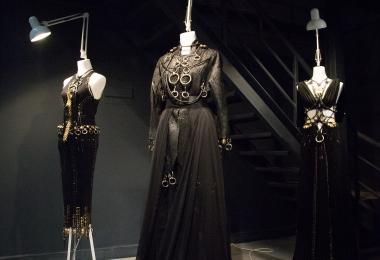
Maan Accessory, Maan Jacket, Maan Dress
Garen Demerdjian
The pieces are an interpretation of traditional Arab design themes and assembled mostly from elements sourced from the local Jordanian bedouin market.
© Amman Design Week 2016

Maan Accessory
Garen Demerdjian
The pieces are an interpretation of traditional Arab design themes and assembled mostly from elements sourced from the local Jordanian bedouin market.
© Amman Design Week 2016
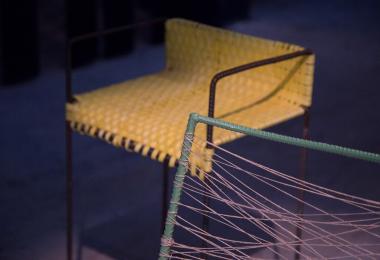
Yellow Chair
ShamsArd
The plastic strap, typically used for binding stone and tile shipments to construction sites, is given new life when intertwined with rebar to create this stool. This design explores the potential of an otherwise undervalued and overlooked material, boasting its inherent brilliant colors, its texture, and its tensile strength. Hand-weaving further extends its capabilities to morph into organic forms.
© Amman Design Week 2016
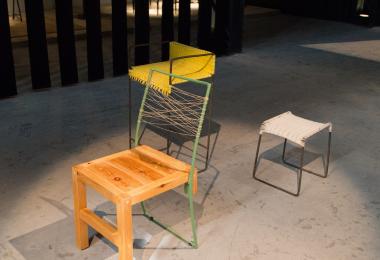
Green Chair, Yellow Chair, Rebar Coffee Stool
ShamsArd
Green Chair
This chair design is a display of a symbiotic relationship between its two ingredient materials; wood and metal. The design explores forms that occur in nature when the need of one organism, in this case the need for structural stability, is fulfilled by another organism, thus creating a codependent structure. The design uses construction waste material to achieve its goal.
Yellow Chair
The plastic strap, typically used for binding stone and tile shipments to construction sites, is given new life when intertwined with rebar to create this stool. This design explores the potential of an otherwise undervalued and overlooked material, boasting its inherent brilliant colors, its texture, and its tensile strength. Hand-weaving further extends its capabilities to morph into organic forms.
Rebar Coffee Stool
This small stool is the modern day twist on the versatile and iconic Mediterranean coffee house
stool, the one found in coffee houses in Amman, Damascus and Jerusalem. The original piece is
made of wood and hand-woven straw rope, yet changes in our environment and agricultural
practices led to the scarcity of these material and as a result had been replaced here by materials
abundant in our time: waste.
© Amman Design Week 2016
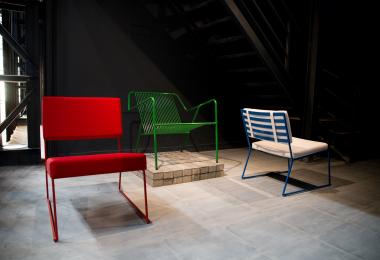
(left to right) Jamil Lounge, Mike X Lounge, Tutu Lounge
Local Industries
Local Industries was founded by Elias and Yousef Anastas in Bethlehem, Palestine. They work with Palestinian artisans, where the conception and production of furniture happens through a constant back-and-forth between all the agents thus undermining the usual boundaries which separate conception from production. Here, conception stems from the means of production and in return the means of production adapt accordingly. The result is a new type of object, which is adapted to local means of productions but also to modern work or living spaces which require a high standard in functionality, aesthetics and quality.
© Amman Design Week 2016
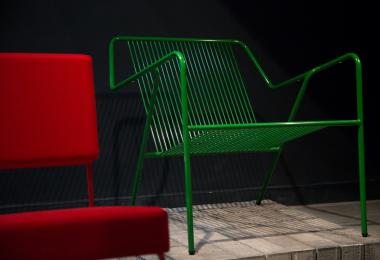
Mike X Lounge
Local Industries
Local Industries was founded by Elias and Yousef Anastas in Bethlehem, Palestine. They work with Palestinian artisans, where the conception and production of furniture happens through a constant back-and-forth between all the agents thus undermining the usual boundaries which separate conception from production. Here, conception stems from the means of production and in return the means of production adapt accordingly. The result is a new type of object, which is adapted to local means of productions but also to modern work or living spaces which require a high standard in functionality, aesthetics and quality.
© Amman Design Week 2016
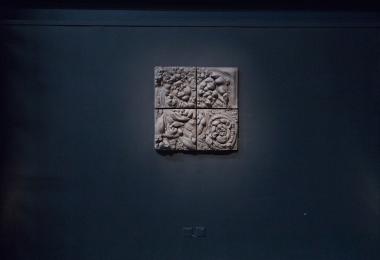
Concrete Bulbs
WaxBusters
Inspired by the relationship between two non-homogeneous materials, Concrete Bulbs is a limited edition set of concrete panels in 4 parts. It is an exploration of emergent material patterns and 3D manufactured surface conditions. The bulbous textures are a result of a process by which hot liquid wax is cooled down rapidly with iced water. All the wax molds used for the project are melted to create new panels after casting, resulting in unique patterns on every piece.
© Amman Design Week 2016
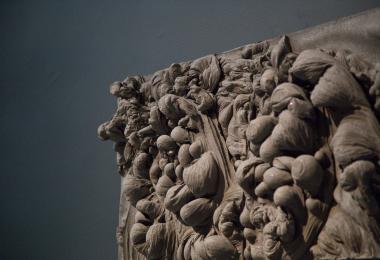
Concrete Bulbs
WaxBusters
Inspired by the relationship between two non-homogeneous materials, Concrete Bulbs is a limited edition set of concrete panels in 4 parts. It is an exploration of emergent material patterns and 3D manufactured surface conditions. The bulbous textures are a result of a process by which hot liquid wax is cooled down rapidly with iced water. All the wax molds used for the project are melted to create new panels after casting, resulting in unique patterns on every piece.
© Amman Design Week 2016
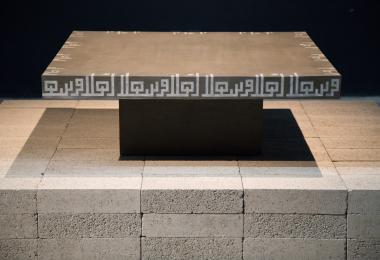
Concrete Khatt Low Table
Nada Debs
Zen minimalism meets Islamic intricacy in a welcoming rectilinear concrete table. Industrial concrete is adorned with noble mother of pearl, repeating the mantra of the Islamic soul; a welcome from the heart. East and East come together both in modern and ancient.
© Amman Design Week 2016
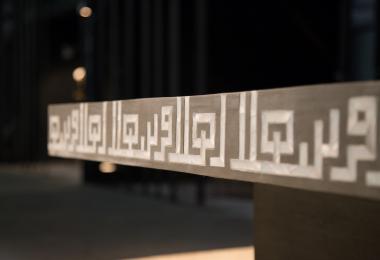
Concrete Khatt Low Table
Nada Debs
Zen minimalism meets Islamic intricacy in a welcoming rectilinear concrete table. Industrial concrete is adorned with noble mother of pearl, repeating the mantra of the Islamic soul; a welcome from the heart. East and East come together both in modern and ancient.
© Amman Design Week 2016

Wihdeh Collection
Naqsh Collective
The Wihdeh collection is inspired by the language of embroidery, where every group of stitches is referred to as a unit. With a strong belief in the spirit of unity, this line sheds light on the beauty of unification and highlights the delights of this beautiful culture. Two prominent elements are present in this line; embroidery (tatreez) to give the cultural feel, and a personal stroke to add an extra designer-personalized dimension. These two elements are presented through engraved selected stone and marble enhanced with brass, to create minimal structures with a sculptural feel.
© Amman Design Week 2016
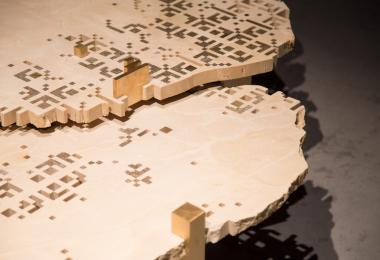
Wihdeh Collection
Naqsh Collective
The Wihdeh collection is inspired by the language of embroidery, where every group of stitches is referred to as a unit. With a strong belief in the spirit of unity, this line sheds light on the beauty of unification and highlights the delights of this beautiful culture. Two prominent elements are present in this line; embroidery (tatreez) to give the cultural feel, and a personal stroke to add an extra designer-personalized dimension. These two elements are presented through engraved selected stone and marble enhanced with brass, to create minimal structures with a sculptural feel.
© Amman Design Week 2016
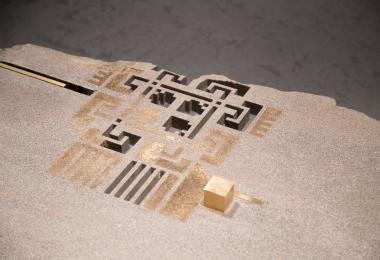
Wihdeh Collection
Naqsh Collective
The Wihdeh collection is inspired by the language of embroidery, where every group of stitches is referred to as a unit. With a strong belief in the spirit of unity, this line sheds light on the beauty of unification and highlights the delights of this beautiful culture. Two prominent elements are present in this line; embroidery (tatreez) to give the cultural feel, and a personal stroke to add an extra designer-personalized dimension. These two elements are presented through engraved selected stone and marble enhanced with brass, to create minimal structures with a sculptural feel.
© Amman Design Week 2016
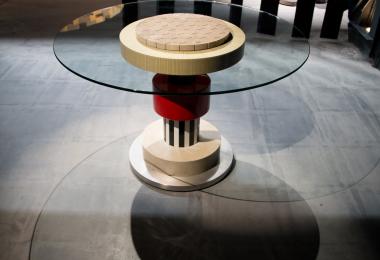
Jabal Amman Table
Jafar Dajani
This table table consists of 8 cylinders, stacked on top of the other to make a functional piece of furniture that relates to memories of the city of Amman. Each cylinder is a different material that corresponds to the colours and textures one experiences on the eight roundabout route. The spinal design is an homage to how this route has become the backbone of this city.
© Amman Design Week 2016
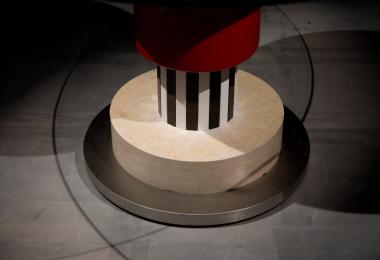
Jabal Amman Table
Jafar Dajani
This table table consists of 8 cylinders, stacked on top of the other to make a functional piece of furniture that relates to memories of the city of Amman. Each cylinder is a different material that corresponds to the colours and textures one experiences on the eight roundabout route. The spinal design is an homage to how this route has become the backbone of this city.
© Amman Design Week 2016
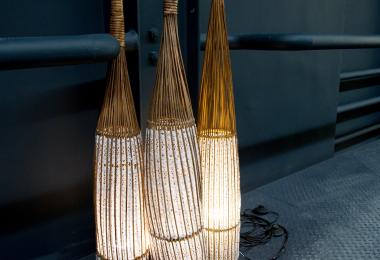
Crocheted Bamboo
Ziadat for Recycling: Ala'a Ziadeh
Enhanced lamp stand with crochet.
© Amman Design Week 2016
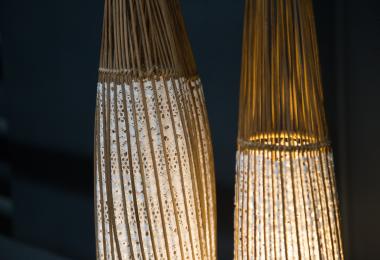
Crocheted Bamboo
Ziadat for Recycling: Ala'a Ziadeh
Enhanced lamp stand with crochet.
© Amman Design Week 2016

Light My Fire Series
Karim Chaya
'Light My Fire' was the name of the exhibition that featured Karim Chaya for spockdesign's series of barbeques. Whimsical yet completely functional, this selection of barbeques take reference from several sources, be it the Lebanese traditional 'man'al' in 'Come on baby light my fire' and 'Istanbul' to a more European minimalist take for 'Norwegian Wood'.
These pieces were made available courtesy of Joy Mardini Design Gallery.
© Amman Design Week 2016
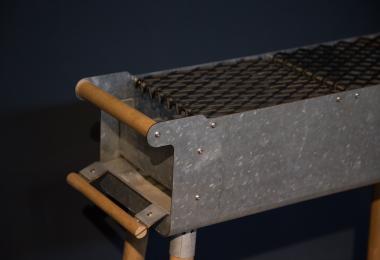
Light My Fire Series
Karim Chaya
'Light My Fire' was the name of the exhibition that featured Karim Chaya for spockdesign's series of barbeques. Whimsical yet completely functional, this selection of barbeques take reference from several sources, be it the Lebanese traditional 'man'al' in 'Come on baby light my fire' and 'Istanbul' to a more European minimalist take for 'Norwegian Wood'.
These pieces were made available courtesy of Joy Mardini Design Gallery.
© Amman Design Week 2016
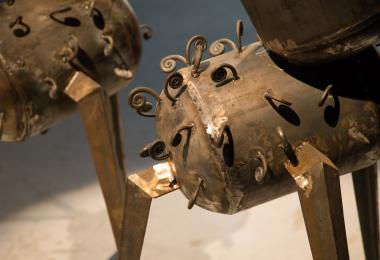
Wood Stoves
Ammar Khammash
Zoomorphic wood stoves that recall the traditional stoves still used in Jordan. The material is steel that has been welded at a blacksmith’s workshop in the north of Irbid.
© Amman Design Week 2016
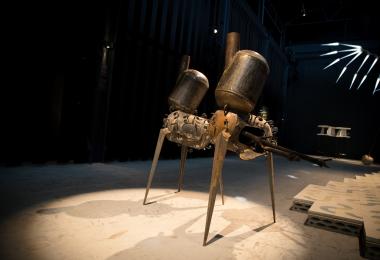
Wood Stoves
Ammar Khammash
Zoomorphic wood stoves that recall the traditional stoves still used in Jordan. The material is steel that has been welded at a blacksmith’s workshop in the north of Irbid.
© Amman Design Week 2016
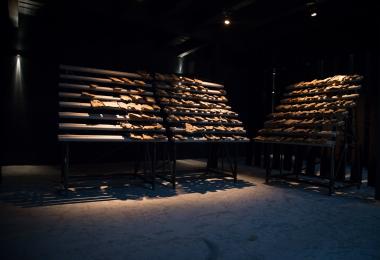
Listening to the Secret Sounds of the Desert
Ammar Khammash
This is a prototype for a musical instrument that resulted from the research of inherent sounds of desert flints and from the geological formation of the Cretaceous period in the eastern Badia of Jordan.
Technical Assistants: Yousef Kawar, Mohammed Malkawi, Hussein Mohammad, Randa Mujahed, Basil Naouri.
© Amman Design Week 2016

Listening to the Secret Sounds of the Desert
Ammar Khammash
This is a prototype for a musical instrument that resulted from the research of inherent sounds of desert flints and from the geological formation of the Cretaceous period in the eastern Badia of Jordan.
Technical Assistants: Yousef Kawar, Mohammed Malkawi, Hussein Mohammad, Randa Mujahed, Basil Naouri.
© Amman Design Week 2016

Barbar Model for a House
Anne Holtorp
The Barbar Temple in Bahrain was discovered, or more correctly re-discovered, in 1954, years after Captain E.L. Durand noticed a pierced limestone block protruding from the crest of a mound in 1879. Excavations continued until 1962, by which time three superimposed temples had been investigated. In the Barbar series, Anne Holtrop resumes the same atmospheric language nostalgic of the Barbar Temple. It is a formal language, defined by straight lines and arcs that together form a loose pattern.
This piece was made available by Solo Galerie.
© Amman Design Week 2016
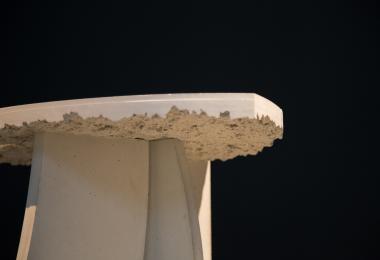
Barbar Model for a House
Anne Holtorp
The Barbar Temple in Bahrain was discovered, or more correctly re-discovered, in 1954, years after Captain E.L. Durand noticed a pierced limestone block protruding from the crest of a mound in 1879. Excavations continued until 1962, by which time three superimposed temples had been investigated. In the Barbar series, Anne Holtrop resumes the same atmospheric language nostalgic of the Barbar Temple. It is a formal language, defined by straight lines and arcs that together form a loose pattern.
This piece was made available by Solo Galerie.
© Amman Design Week 2016
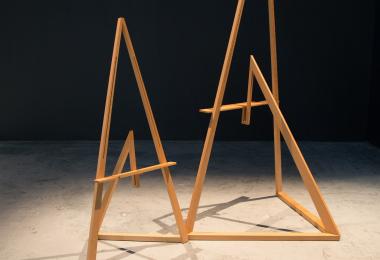
Pygmalion
Mais el Azab
Pygmalion is a set of two custom-designed easels placed in a certain arrangement that forms one sculptural entity. The design of the set pays homage to the formal aesthetics of the classical easel. It is an exploration of the balancing act of the easel’s skeletal structure, its tilted planes and their relation to the viewing eye.
© Amman Design Week 2016

Pygmalion
Mais el Azab
Pygmalion is a set of two custom-designed easels placed in a certain arrangement that forms one sculptural entity. The design of the set pays homage to the formal aesthetics of the classical easel. It is an exploration of the balancing act of the easel’s skeletal structure, its tilted planes and their relation to the viewing eye.
© Amman Design Week 2016

Al-Warqaa
Adel Abidin
Al-Warqaa is a mixed media sculpture inspired by ‘Ode to a Human Soul’, a poem by Avicenna. The poem compares the journey of the soul to the flight of a dove. In Avicenna’s verses, the soul represents a timeless, ethereal entity that soars beyond the body after death. It signifies eternity, detached from the heavenly sphere. In Al-Warqaa, a suspended object radiates light and depicts an intangible outline of a dove, reflecting this idea visually. A suspended light-based sculpture also radiates light and depicts an intangible outline of a dove.
© Amman Design Week 2016
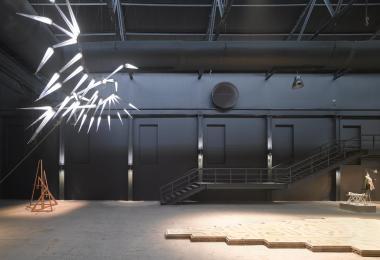
Al-Warqaa
Adel Abidin
Al-Warqaa is a mixed media sculpture inspired by ‘Ode to a Human Soul’, a poem by Avicenna. The poem compares the journey of the soul to the flight of a dove. In Avicenna’s verses, the soul represents a timeless, ethereal entity that soars beyond the body after death. It signifies eternity, detached from the heavenly sphere. In Al-Warqaa, a suspended object radiates light and depicts an intangible outline of a dove, reflecting this idea visually. A suspended light-based sculpture also radiates light and depicts an intangible outline of a dove.
Photo by Roland Halbe
© Amman Design Week 2016
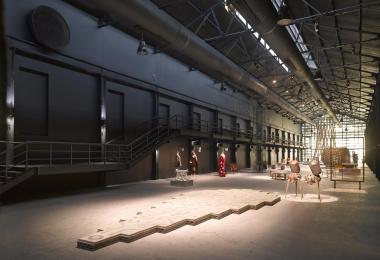
Tiles by Warsheh
Warsheh: Hadi Alaeddin and Mothanna Hussein
Conventional terrazzo tiles are revisited to produce numerous graphic compositions using two
basic forms.
Photo by Roland Halbe
© Amman Design Week 2016
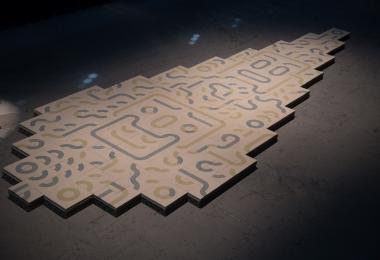
Tiles by Warsheh
Warsheh: Hadi Alaeddin and Mothanna Hussein
Conventional terrazzo tiles are revisited to produce numerous graphic compositions using two basic forms.
© Amman Design Week 2016
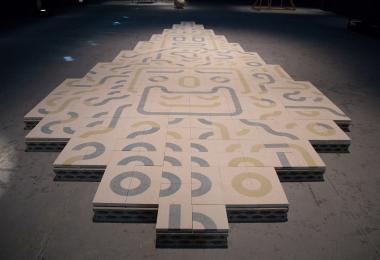
Tiles by Warsheh
Warsheh: Hadi Alaeddin and Mothanna Hussein
Conventional terrazzo tiles are revisited to produce numerous graphic compositions using two basic forms.
© Amman Design Week 2016

Amman, Irbid, Baqa'a, Sweileh, Tuning Tradition, Mesh Wear
Tania George, Kumbaz Fashion House: Fatina Asfour
Fashion design at the Hangar Exhibition
Photo by Roland Halbe
© Amman Design Week 2016
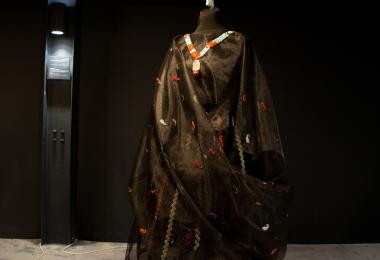
Appropriation
Kumbaz Fashion House: Fatina Asfour
Based on sustainability and recycling, this piece incorporates everyday materials into fashion and design.
© Amman Design Week 2016
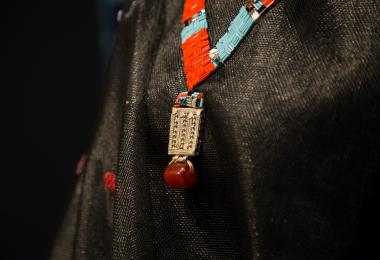
Appropriation
Kumbaz Fashion House: Fatina Asfour
Based on sustainability and recycling, this piece incorporates everyday materials into fashion and design.
© Amman Design Week 2016
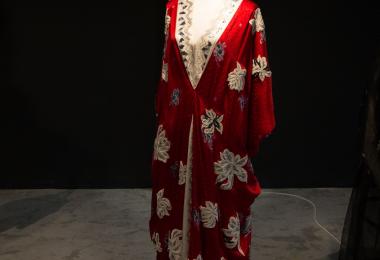
Tuning Tradition
Kumbaz Fashion House: Fatina Asfour
This outfit is inspired by the vivacity of the Middle East and the subtlety of the Far East which is reflected in its asymmetrical design. The piece is tailored using vintage red silk material with retro prints that use different techniques such as 'rashek', 'itan', 'hashi' and ‘paillette’.
© Amman Design Week 2016

Amman, Irbid, Baqa’a, Sweileh
Tania George
As part of the 'Clothes for a Cause' initiative, which offers unique hand-made pieces, made by women in Jordan, the 'Amman, Irbid, Baqa’a, Sweileh' collection is inspired by the charm of chaotic Amman and highlights the beauty of simple things that often goes unnoticed.
© Amman Design Week 2016
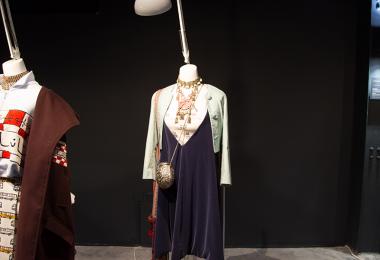
Amman, Irbid, Baqa’a, Sweileh
Tania George
As part of the 'Clothes for a Cause' initiative, which offers unique hand-made pieces, made by women in Jordan, the 'Amman, Irbid, Baqa’a, Sweileh' collection is inspired by the charm of chaotic Amman and highlights the beauty of simple things that often goes unnoticed.
© Amman Design Week 2016

Amman, Irbid, Baqa’a, Sweileh
Tania George
As part of the 'Clothes for a Cause' initiative, which offers unique hand-made pieces, made by women in Jordan, the 'Amman, Irbid, Baqa’a, Sweileh' collection is inspired by the charm of chaotic Amman and highlights the beauty of simple things that often goes unnoticed.
© Amman Design Week 2016
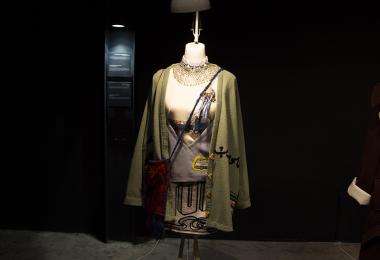
Amman, Irbid, Baqa’a, Sweileh
Tania George
As part of the 'Clothes for a Cause' initiative, which offers unique hand-made pieces, made by women in Jordan, the 'Amman, Irbid, Baqa’a, Sweileh' collection is inspired by the charm of chaotic Amman and highlights the beauty of simple things that often goes unnoticed.
© Amman Design Week 2016

Teascapes
Namliyeh
Teascapes explores the mechanism of how we remember, interact and read landscapes. These landscapes are poured into a cup of tea to unfold a journey that investigates ingredients through taste, smell and texture. Through careful display of handpicked objects, the trail is abstracted into a sensory map forming rich, deep, and strong neural connections with the ingredients.
© Amman Design Week 2016
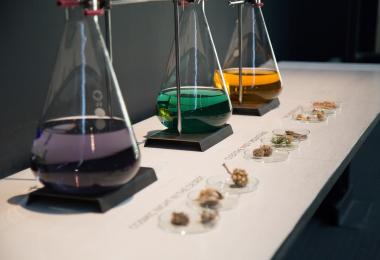
Teascapes
Namliyeh
Teascapes explores the mechanism of how we remember, interact and read landscapes. These landscapes are poured into a cup of tea to unfold a journey that investigates ingredients through taste, smell and texture. Through careful display of handpicked objects, the trail is abstracted into a sensory map forming rich, deep, and strong neural connections with the ingredients.
© Amman Design Week 2016
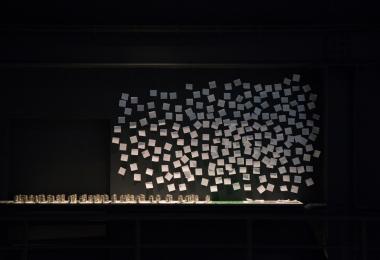
Smellscapes Amman 2016: Phase 1
Sissel Tolaas
Once trained, our olfactory systems can provide a new source of knowledge. Smells navigate through our consciousness and memory as much as through urban structures and cultural stereotypes. Sensory interaction and peripheral vision allow each of us to experience our own self-image and presence, unlocking the potential for creativity and empathy. All cities – as built environments – contain accidental and overlooked smells as part of their overall identity. Smells shape spatial perception much more powerfully than light or sound. To challenge people to activate their sense of smell – the nose – in a new way and for new purposes is to gain back qualities to life.
© Amman Design Week 2016

Smellscapes Amman 2016: Phase 1
Sissel Tolaas
Once trained, our olfactory systems can provide a new source of knowledge. Smells navigate through our consciousness and memory as much as through urban structures and cultural stereotypes. Sensory interaction and peripheral vision allow each of us to experience our own self-image and presence, unlocking the potential for creativity and empathy. All cities – as built environments – contain accidental and overlooked smells as part of their overall identity. Smells shape spatial perception much more powerfully than light or sound. To challenge people to activate their sense of smell – the nose – in a new way and for new purposes is to gain back qualities to life.
© Amman Design Week 2016
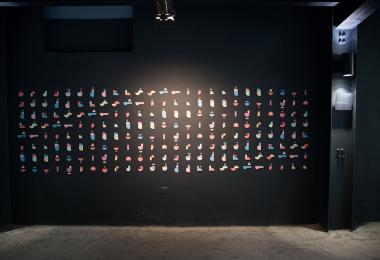
Geometric Arabic Minimalist Alphabet
Tariq Yosef
Lettering and Arabic typography design
© Amman Design Week 2016
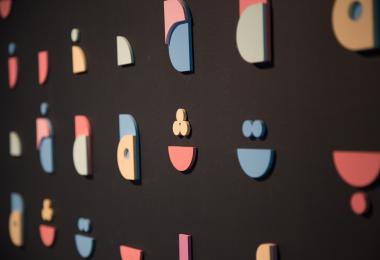
Geometric Arabic Minimalist Alphabet
Tariq Yosef
Lettering and Arabic typography design
© Amman Design Week 2016

Loop-Whole
Lutfi Zayed
9-channel video installation - nine screens display different animations that intersect and interact with each other.
© Amman Design Week 2016

Loop-Whole
Lutfi Zayed
9-channel video installation - nine screens display different animations that intersect and interact with each other.
© Amman Design Week 2016
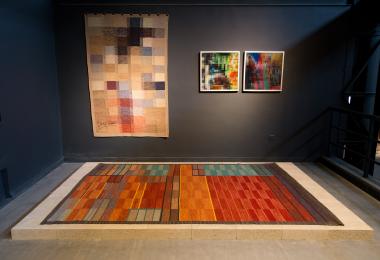
London, Keep Calm Stay Calm - rugs inspired by lenticular work
Dodi Tabbaa
The rugs are based on Tabbaa’s lenticular artworks, and script on the close relationship and exchange between art and design.
© Amman Design Week 2016
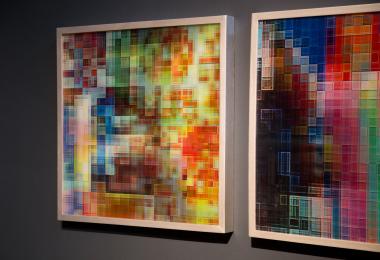
Lenticular works
Dodi Tabbaa
The rugs are based on Tabbaa’s lenticular artworks, and script on the close relationship and exchange between art and design.
© Amman Design Week 2016
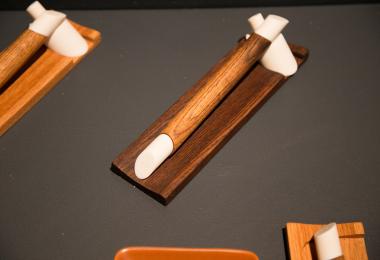
Salt & Pepper Shaker Duo
Sahar Madanat Design Studio
The shaker is designed for simplicity in manufacturing and use. Its unique design provides a one handed operation without the need for mechanisms, making it intuitive, durable and easy to clean. It’s like a traditional shaker, but better.
© Amman Design Week 2016
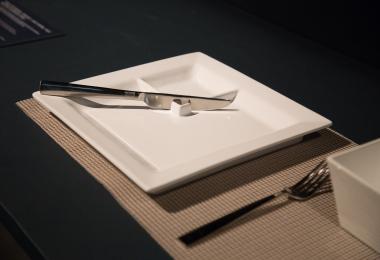
One-Handed Plate Set
Sahar Madanat Design Studio
One-handed plate and bowl set is the ideal solution for one-handed users. Its unique design, allows the user to cut their food directly in their dinning plate, keeping the meal hot and tasty.
© Amman Design Week 2016
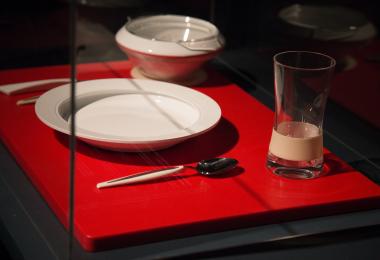
Sanoware
Sahar Madanat Design Studio
The Sanoware line addresses independent and better eating for the elderly and disabled. To create this line, Sahar spent months studying the behavior patterns of her target users, and testing out ways to reinject confidence into their dining experiences.
© Amman Design Week 2016

Heart Aid
Sahar Madanat Design Studio
Heart Aid is an emergency response device for home use that empowers anyone to rescue a heart attack victim.
Heart Attacks are a leading cause of death worldwide, and over 80% of them occur at home. Through clever ergonomic features and familiar technologies, it can increase chances of survival from 5% up to an impressive 74%. By countering the state of panic most people experience while tending to a heart attack victim, Heart Aid’s intuitive features allow even an elderly person to perform CPR and Defibrillation on the victim within minutes of the attack, reducing errors, saving time, and, in doing so, saving lives. U.S. Utility Patent - Granted.
© Amman Design Week 2016

Heart Aid
Sahar Madanat Design Studio
Heart Aid is an emergency response device for home use that empowers anyone to rescue a heart attack victim.
Heart Attacks are a leading cause of death worldwide, and over 80% of them occur at home. Through clever ergonomic features and familiar technologies, it can increase chances of survival from 5% up to an impressive 74%. By countering the state of panic most people experience while tending to a heart attack victim, Heart Aid’s intuitive features allow even an elderly person to perform CPR and Defibrillation on the victim within minutes of the attack, reducing errors, saving time, and, in doing so, saving lives. U.S. Utility Patent - Granted.
© Amman Design Week 2016
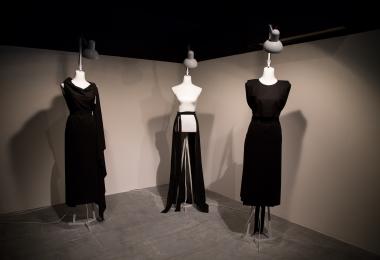
(left to right) Rectangular Dress, Skirf, T-Wrap Dress
Edelina Joyce Issa
The Rectangular Drape dress was inspired by the idea of how a piece of cloth can be shapeless and flat, yet create the opposite in form once worn. Made in a light crepe fabric, four holes in the rectangular piece of cloth create armholes, which allow the dress to be worn front-to-back or back-to-front. It has an additional small hole, to allow the detachable belt to be put through, to gather the drape or accentuate the body by gathering in at the waist.
The Skirf is inspired by the image of a piece of cloth loosely hanging off the back of my grandmother’s head. Made in a sheer super light wool and influenced by the versatility of a piece of cloth, this can be worn as a scarf hood, a half skirt, a cape, or a shawl.
Made in a light smooth wool, the T-wrap dress is inspired by the T-shape of a traditional thobe, recreated in an even more simplistic form. The thobe is minimal in construction and shape and is pulled on over the head. The T-dress is an adaptation of this concept; and so when laid flat it is without shape yet when pulled over the head, the shape is created with the wrap of the belt, bodice darts, and the optional closure of poppers for a closer fit.
© Amman Design Week 2016
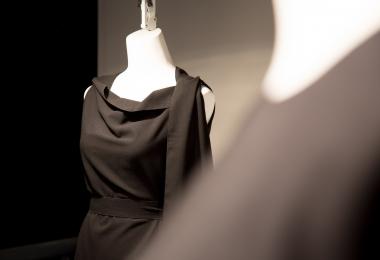
Rectangular Dress
Edelina Joyce Issa
The Rectangular Drape dress was inspired by the idea of how a piece of cloth can be shapeless and flat, yet create the opposite in form once worn. Made in a light crepe fabric, four holes in the rectangular piece of cloth create armholes, which allow the dress to be worn front-to-back or back-to-front. It has an additional small hole, to allow the detachable belt to be put through, to gather the drape or accentuate the body by gathering in at the waist.
© Amman Design Week 2016
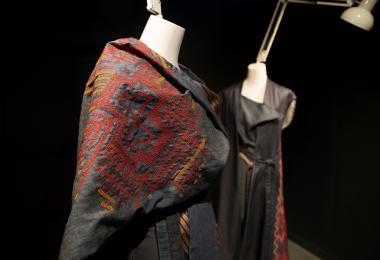
JO!
Creative Jordan
JO! is both Womenswear and Menswear and the first collection was for Spring/Summer 2017.
© Amman Design Week 2016
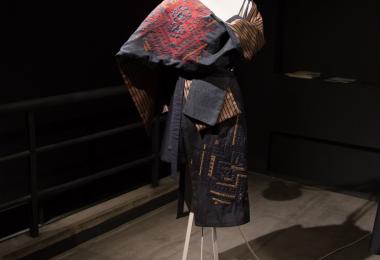
JO!
Creative Jordan
JO! is both Womenswear and Menswear and the first collection was created for Spring/Summer 2017.
© Amman Design Week 2016
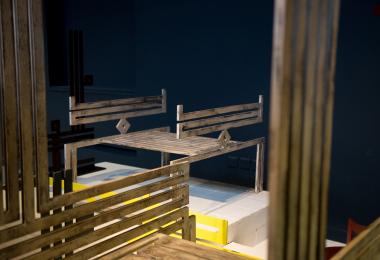
Peace & Love
Hayyan Maani
Two chairs that explore the intersection between modern Arabic calligraphy and furniture design.
© Amman Design Week 2016

Peace & Love
Hayyan Maani
Two chairs that explore the intersection between modern Arabic calligraphy and furniture design.
© Amman Design Week 2016
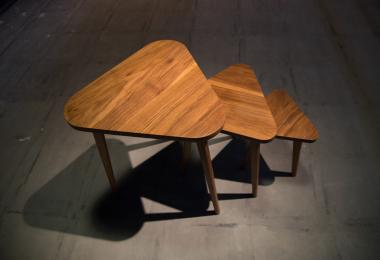
Nesting Tables
Reem Abu Sitteh
© Amman Design Week 2016
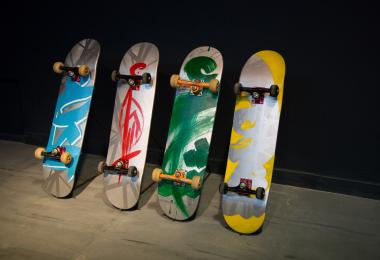
Street Letters
Hussein Alazaat
These pieces reflect the dialogue between design, the street, and the art of the written word. It is a reflection of the daily scene of Amman’s identity in a visual form.
© Amman Design Week 2016
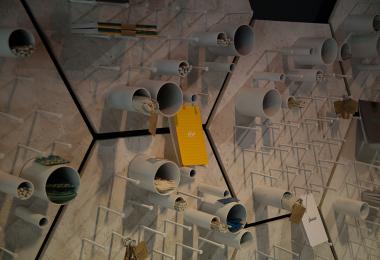
The Hexagon
ARD Designs: Dina Al Ahmad
The design of the Amman Design Week Gift Shop is based on expanding the potential of a simple unit, or a cell, repeated through different arrangements to form different wall units, tables, freestanding display units, or stools.
© Amman Design Week 2016
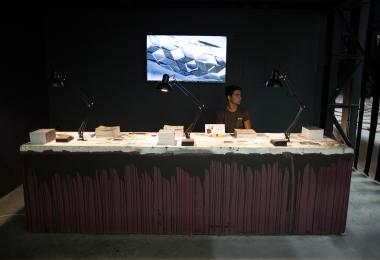
Dancing Objects
Studio 8
The video installation features young people and refugee families from the marginalized neighborhoods in Jordan who are learning to express themselves through dance on the street. Dancers often use recycled cardboard to absorb impacts and prevent street dancers from injuries. The thin, portable, and soft DIY dance mat accompanied these self-taught urban artists throughout their practice. Furthermore the recycled cardboard is the ultimate symbol of transience, leaving, moving, and packing. It contradicts what we think of family, society, life as: stable, foundational, permanent.
© Amman Design Week 2016
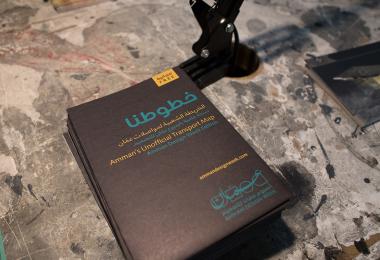
Amman's Unofficial Transport Map
Designed by Syntax
© Amman Design Week 2016
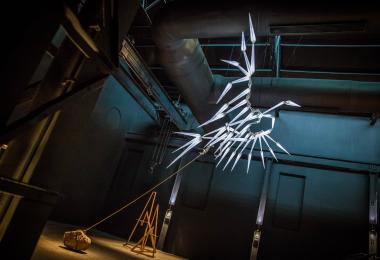
The Hangar Exhibition
Curated by Sahel Al Hiyari
© Amman Design Week 2016

